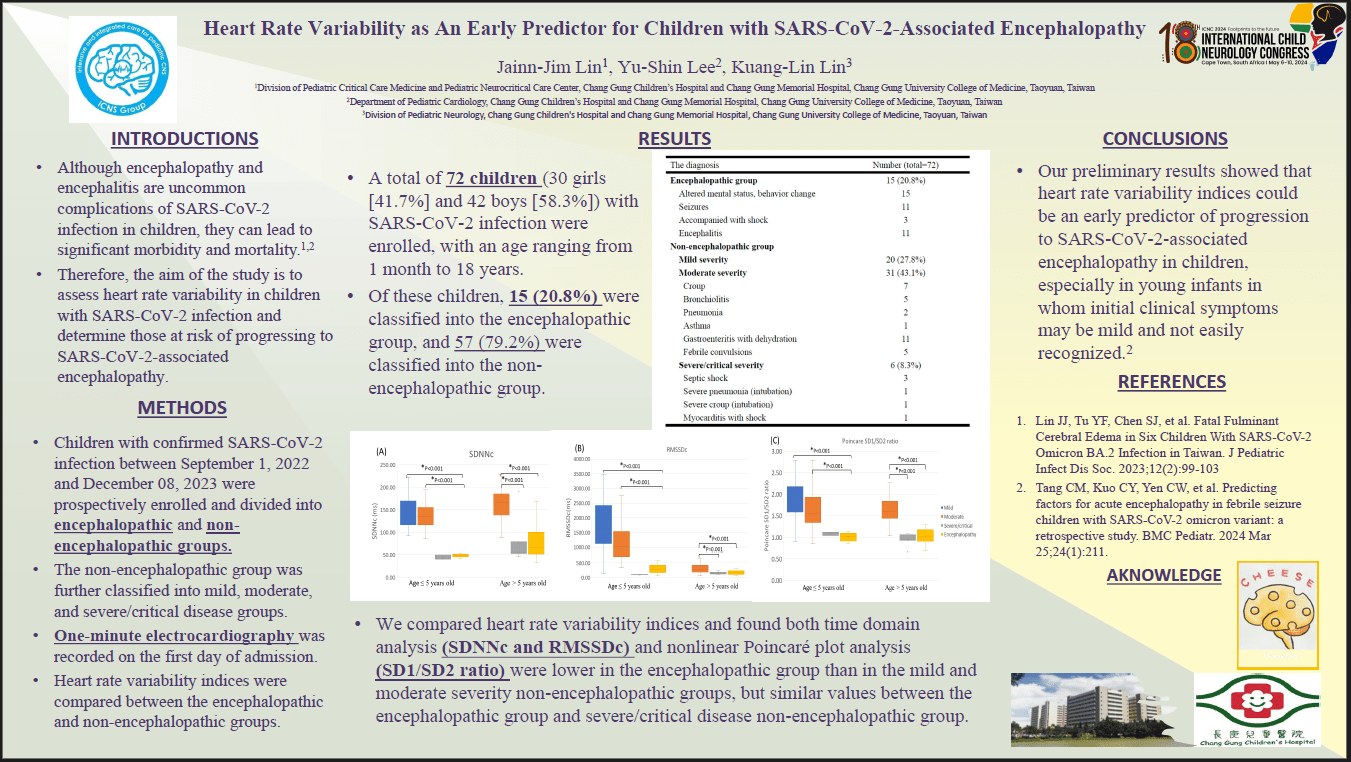Heart Rate Variability As Early Prediction For Children With COVID-19 Associated Encephalopathy/Encephalitis
Background: Few data are available regarding the involvement of the autonomic nervous system (ANS) during the acute phase of SARS-CoV-2 infection in children. Therefore, the aim of the study is to assess heart rate variability in COVID-19 patients and compare between encephalopathy/encephalitis patients and non-encephalopathy/encephalitis COVID patients. Methods We enrolled cases from the hospital's COVID-19 dedicated ward and pediatric intensive care unit. The patients was divided into 4 group: mild disease, moderate disease, severe disease and encephalopathy/encephalitis. We collected their 1 minute EKG during the first days after admission in acute phase. We analyzed the correlation of heart rate variability and clinical disease severity.
Results We collected 72 children diagnosed with COVID-19, ranging in age from 1 month to 18 years old. Among them, 20 had mild disease, 31 had moderate disease, 6 had severe disease and 15 had encephalopathy/encephalitis. We compared the HRV parameters of children in four groups and found that lower SDNN (61.04±30.18 VS 117.62±31.53 and 135.15±49.29, P=<0.001 and <0.001, respectively), RMSSD (85.66±43.85 VS 114.09±36.11 and 147.53±63.14, P=0.078 and <0.001, respectively), pNN50 (30.07±18.43 VS 42.17±19.04 and 38.72±18.04, P=<0.001 and 0.07, respectively), and SD1/SD2 ratio (1.00±0.11 VS 1.88±0.52 and 1.55±0.43, P=<0.001 and <0.001, respectively) in encephalitis/encephalopathy group compared to mild and moderate group, but above parameters were similar between severe group and encephalitis/encephalopath group. Conclusions Our preliminary results showed to using heart rate variability could be as an early predictor in children with COVID-19 associated encephalopathy/encephalitis.
Jainn-Jim Lin
Chang Gung Memorial Hospital
Taiwan
Yu-shin Lee
Chang Gung Memorial Hospital
Taiwan
Kuang-Lin Lin
Taiwan

Jainn-Jim Lin
Chang Gung Memorial Hospital
Taiwan